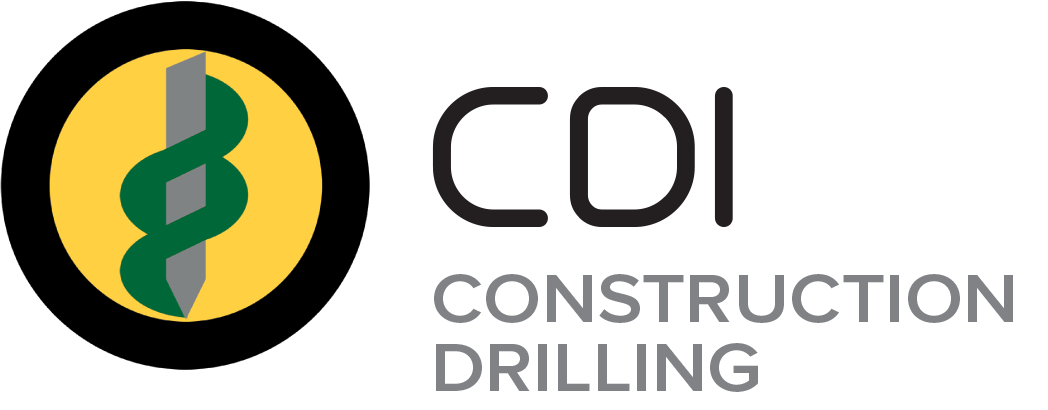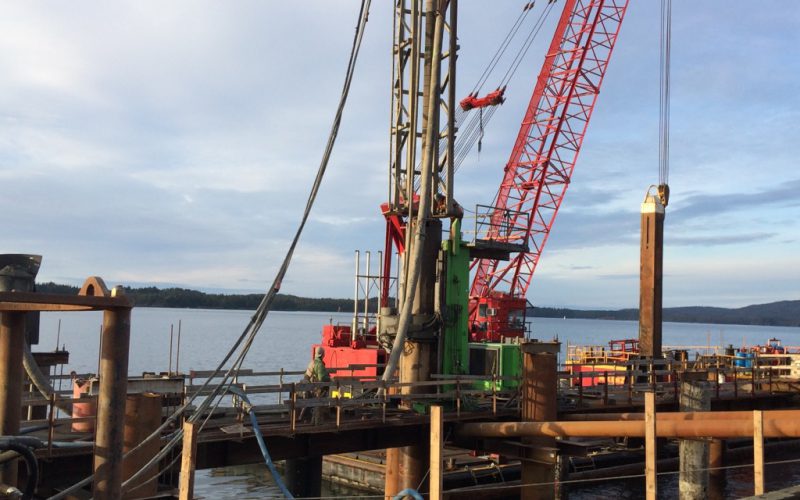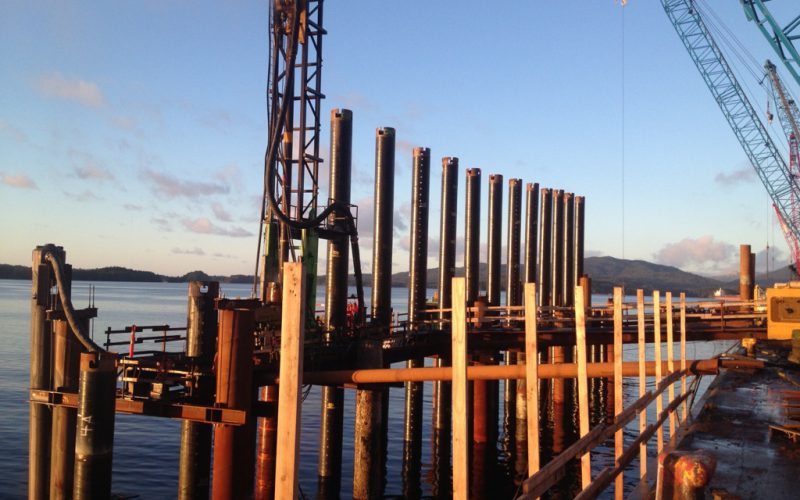Project Overview:
To prepare the casing, Carbide Cutting Teeth were supplied and welded onto the bottom of each casing. The carbide teeth allowed the casing to core through the overburden and bedrock. In addition each pipe was notched to accept the casing over sleeve to protect the painted/coated piles.
A series of guide frames / templates with each frame able to support the installation of 7 each piles, were preinstalled to position each pile. The guide frames were reinstalled sequentially along the pile line. The production piles were pre-installed in the frames with a vibratory hammer. The DTH hammer and drill string were then hoisted into the pile and secured.
CDI’s casing rotator, was hoisted overtop of the pile containing the DTH hammer and pinned to the guide frame. The over sleeve was hoisted over the permanent pile and lowered through the rotator and the drive notches were engaged. Utilizing the dual rotary drill system, the CDI rotator advanced the casing into bedrock while drilling out the inner diameter of the casing. Once the casing was sufficiently seated into bedrock, the CDI top drive and DHH advanced the rock socket below the bottom of the casing for a depth of 7.5m. Once the drill head reached the required depth, the drill steel was disconnected and the top drive and leads were removed. The drill steel was hoisted out of the casing and transferred into the next casing. This process was repeated for all of the additional production piles.
Geotechnical / Pile length issues occurred, and CDI was retained to return to the site. CDI drilled out the concrete in two of the piles on land. CDI then mobilized the drilling equipment to a Marine derrick and completed 9 remaining piles from the water.
Project Details:
| Owner: | Prince Rupert Port Authority (PRPA) |
| Client: | Fraser River Pile & Dredge Inc |
| Final Contract Value: | $850,000 |
| Duration: | 4 months |
Project Logistics:
| Caisson Wharf, 914mm Ø Drilled Piles c/w 7.5m deep rock sockets | 63 Piles |
| Re-drill piles | 11 Piles |



